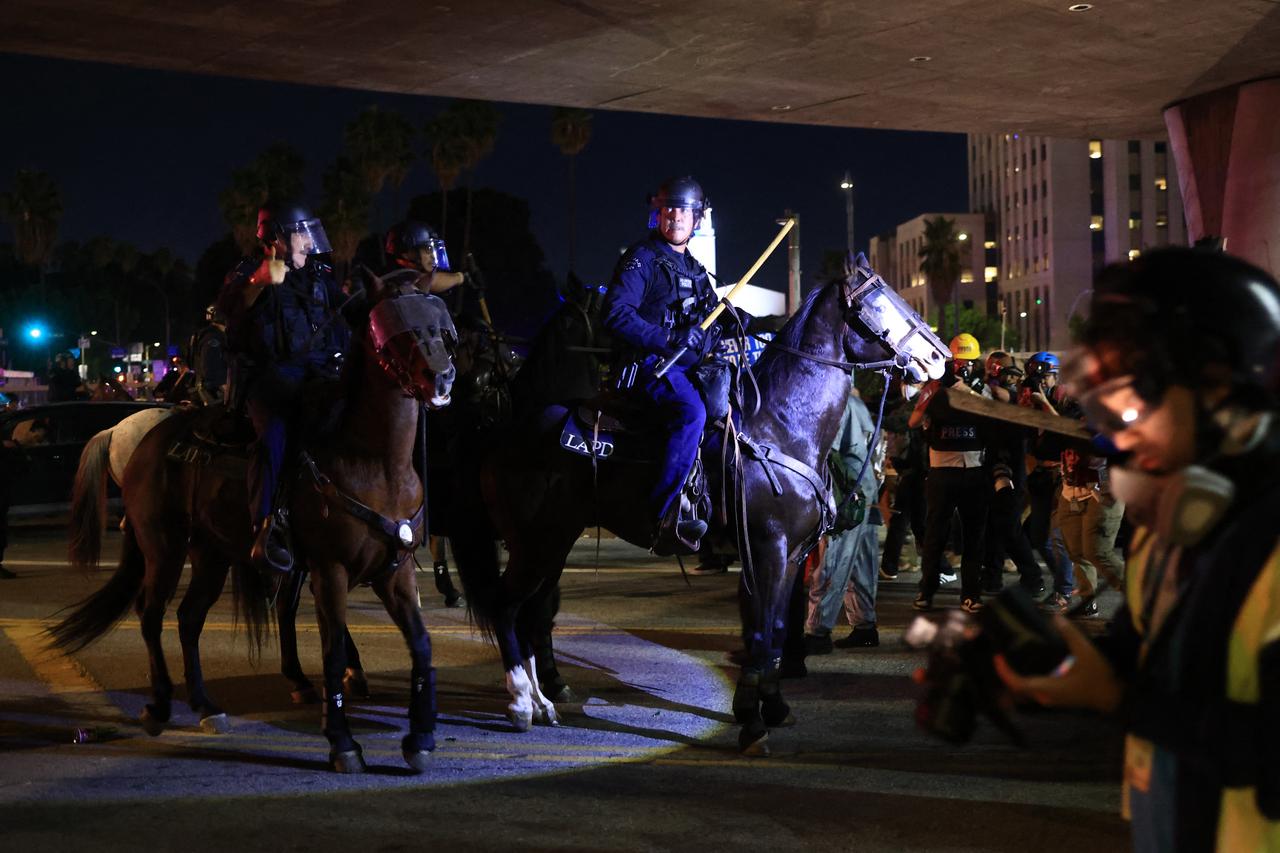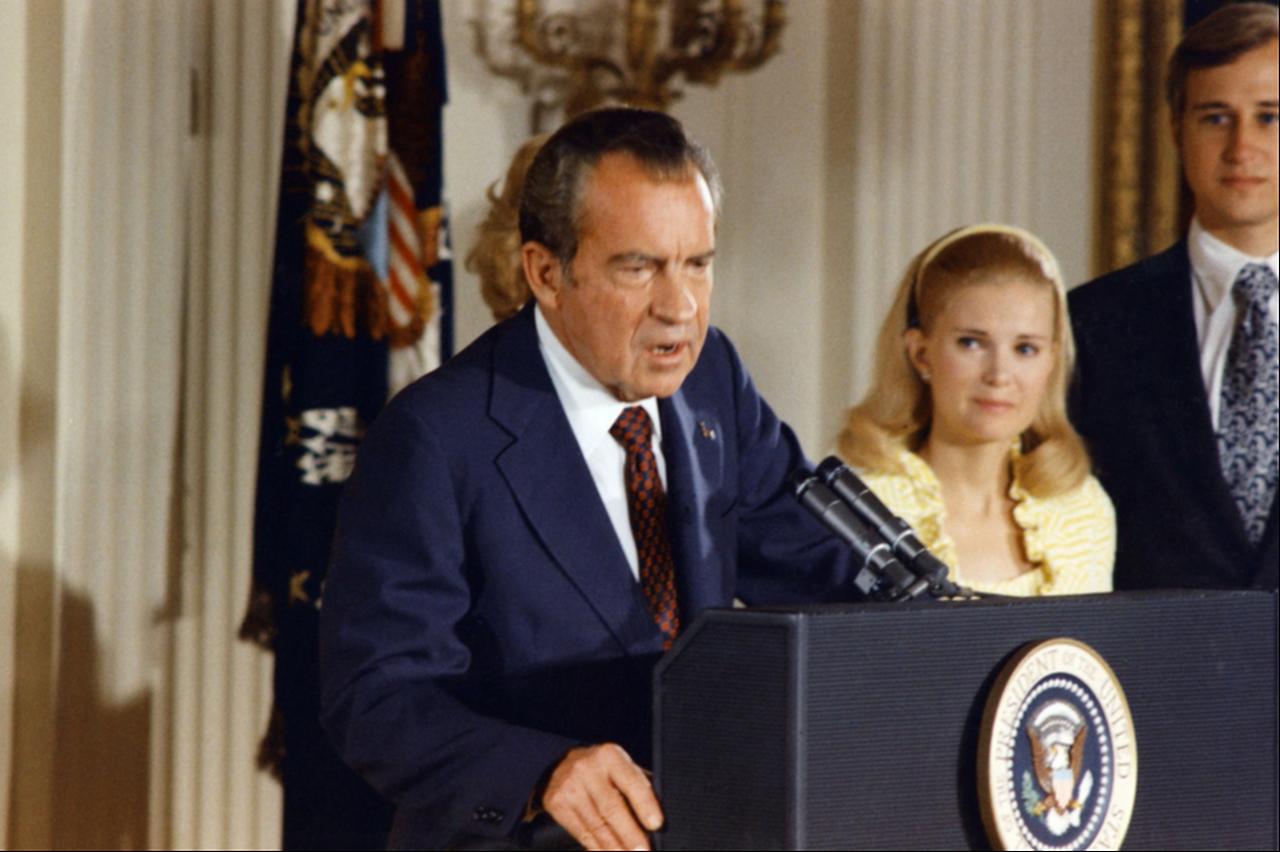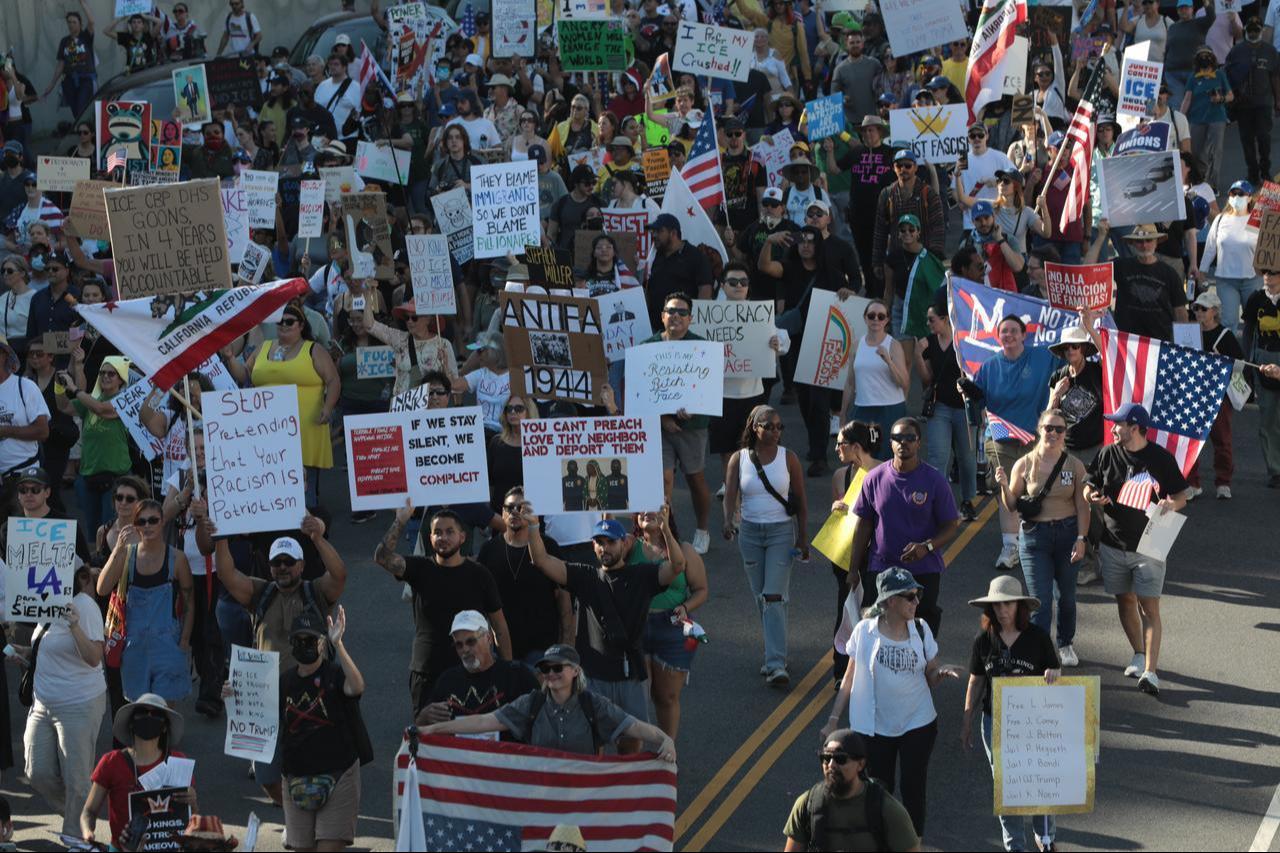
Slogans echoing through the streets of Washington recall a deep memory in America’s political consciousness: “No one is above the law.”
Today’s protests, known as the “No King” movement, center on President Donald Trump’s legal battles, his election campaigns, and the future of American democracy, replaying a scene that seems to have been lifted from half a century ago.
The political crisis born in the shadow of Richard Nixon in the early 1970s tells us much about America today.
As Trump supporters and opponents gather in the same public spaces, banners reading “No King” evoke the “Impeach Nixon” posters of the 1970s.
The difference is clear: in 1974, the White House stood behind a veil of secrecy, on the brink of the information age. In 2025, leaking information is just a click away.
Yet in both periods, the same question loomed: Are American presidents truly untouchable?
Protests against Trump erupted almost simultaneously in New York, Washington, and Chicago in the fall of 2025. Crowds gathered outside courthouses to protest his trials on four charges—interfering with election results, withholding classified documents, making hush payments, and encouraging the January 6 attack on Congress.
The “No King” slogan emerged because many perceive Trump as a figure above the system.
The Jan. 6 attack was a tipping point. Thousands of Trump supporters, refusing to accept the election outcome, stormed the Capitol. In doing so, they shook the foundations of American democracy. That day, it wasn’t just windows that shattered; institutional trust cracked.
Trump faced legal consequences but gained political strength—a paradox that lies at the heart of today’s protests. How can a leader threaten democratic norms yet extract power from within the system?
This question reaches directly back to the 1970s. Half a century ago, Nixon pursued a similar “fight against the system from within” strategy. Nixon spoke to the “silent majority” in the 1968 election.
He addressed a weary, economically struggling public, resentful of elites. Trump in 2016 used a similar language. Both presented themselves as anti-establishment, yet once in power, they bent the system to their advantage.
The connection is striking: the societal fears and frustrations that enabled Nixon to rise are, in many ways, mirrored in today’s America. Recognizing this parallel allows us to understand why certain protest movements and political behaviors repeat across generations.
In the summer of 1972, two young Washington Post reporters—Bob Woodward and Carl Bernstein—traced what seemed an ordinary burglary at the Watergate complex, unaware they were uncovering one of the most shocking political scandals in American history.
Nixon had targeted the Democratic Party headquarters in an illegal surveillance operation while running for re-election. But the real impact came from the courage of the American press.
“Deep Throat,” a secret source later revealed as FBI Deputy Director Mark Felt, exposed Nixon’s lies, secret funds, and systematic cover-ups.
The risks taken by Washington Post editor Ben Bradlee redefined the role of a free press in a functioning democracy.

The scandal profoundly affected Nixon personally and politically. The image of a leader speaking to the silent majority and promising stability was shattered.
His actions in the Oval Office sent a clear message: the president is under the law, not above it. After his resignation, Nixon retreated from public life, writing books and giving interviews to defend his historical record.
Protests during 1973 and 1974 in Washington, New York, Philadelphia, and other cities, driven by students, civil society organizations, and unions, filled the streets with slogans like “Impeach Nixon” and “No More Cover-Ups.”
Occasionally clashing with police, these demonstrations proved that public pressure could shape presidential decisions. Nixon’s initial dismissal of the protests hastened his political downfall.
Fifty years later, the “No King” movement around Trump resonates as a modern echo of that same journalistic tradition and civic response.
The difference today is that leaks come not from journalists alone but from social media users, former White House aides, and algorithms themselves. Where information once traveled by typewriter and telegraph, it now circulates digitally by the millions in seconds.
The principle remains: public scrutiny matters, regardless of medium.
To Americans in the 1970s, Nixon symbolized systemic failure: the bloody legacy of Vietnam, rising campus protests, and the shadow of Martin Luther King's and Kennedy’s assassinations.
The nation was already on the brink of trauma. Watergate was the final blow. Nixon’s resignation demonstrated the ability of American democracy to self-correct while also exposing the vulnerability of political trust.
Trump’s era reflects a different version of that trauma. The “No King” slogan speaks not only to Trump but to the longstanding tension between America’s center and its periphery.
The silent majority that backed Nixon is largely the same demographic rallying around Trump today. Then, anger was directed at liberal elites, the media, and antiwar youth. Now, it targets the Washington swamp, tech giants, and pro-immigrant circles.
Protests in both eras reveal a divided America: one that trusts institutions and the rule of law, another that feels marginalized and seeks identity in a powerful leader.
Nixon’s “law and order” rhetoric was a precursor to Trump’s “Make America Great Again” slogan. Both claimed to defend order against chaos.

After Watergate, America first debated the state’s right to surveil its own citizens. FBI and CIA illegal activities, document disclosures, and strengthened Congressional oversight were all responses to protect democracy.
The post-Nixon press emerged as a sacred “fourth estate” while simultaneously becoming central to political polarization. Trump’s era shows the explosive result: the media now functions as both referee and participant.
The “No King” movement arose within this media legacy. America is once again divided between Trump supporters, who label the trials a “political witch hunt,” and those defending the rule of law.
Protests that once took place at the White House, the National Mall, and campuses now occur in Times Square and across social media’s virtual arenas.
Yet there is a distinction: Nixon-era protests were primarily youth-driven against corruption and war, while today’s “No King” demonstrations cross generations. Older Americans view Nixon’s era as a victory for democracy. Younger generations see the system already eroded.
For them, the issue is not merely Trump but the decay of America’s institutional memory.
Watergate opened a lasting chapter in journalism, though the same methods no longer dominate. Bradlee’s newsroom could change history with a single phone call. Today, the fate of news rests with algorithms. The movement’s most repeated slogan reflects this shift: “Democracy can’t be streamed.”
When Nixon resigned in 1974, he addressed the nation: “I am leaving the presidency for the good of the American people.” Ironically, his departure revealed the darker side of the state to the public.
Trump, by contrast, frames himself as the one dismantling the system on behalf of the people. Nixon’s crimes were shrouded in secrecy; Trump’s are on display. Nixon avoided cameras; Trump speaks directly into them.
Both leaders rose by exploiting societal fears.
Nixon leveraged Cold War paranoia; Trump capitalized on post-globalization anxieties.
Nixon’s enemies were communists; Trump’s were immigrants and liberal elites. In both cases, the adversary served as a unifying focus for public anger.
After Watergate, Americans vowed “never again.” Yet events in the 2020s reveal that the trauma never fully healed.
Power dynamics within the state, the impartiality of the justice system, and presidential authority are once again in debate. This debate demonstrates both the maturity and fragility of American democracy.
Perhaps the most striking parallel is the erosion of international credibility. Nixon’s era was shadowed by Vietnam and CIA operations; today, America’s moral authority is questioned amid crises from Ukraine to Gaza.
Domestic divisions threaten foreign policy credibility.
Yet despite crises, America’s political system remains resilient through established institutions. The presidency and its supporting bureaucracy ensure continuity independent of personal authority.
The “Designed Survivor” mechanism guarantees uninterrupted government operations even if the president is unavailable, safeguarding daily life and national stability.
This institutional resilience amplifies the significance of the “No King” movement. Americans, drawing lessons from history, assert the rule of law and accountability.
“No King” is therefore not simply a revolt against Trump but a powerful reminder of the pillars of the American republic—separation of powers, accountability, and citizen representation.
The process that forced Nixon to resign reflected faith in institutional self-correction. Today, that faith has been replaced with deep scrutiny and doubt.
For this reason, “No King” banners are more than slogans; they are historical symbols warning against the dangers of unchecked power. Neither Nixon nor subsequent presidents could defy the law.
America cannot escape its past; every scandal, protest, and cry of “No King” is democracy examining itself.
In conclusion, the parallels between Nixon and Trump remind us that leadership, accountability, and citizen vigilance are timeless.
Bradlee’s words still resonate: “The only way to safeguard a nation’s future is to remember its past mistakes.”